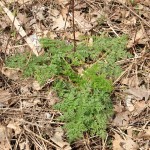This blog is intended to educate people and share things in nature that I find and photograph as well as about places I visit to give the reader ideas and inspiration to visit these wonder natural areas. While today’s subject could possibly be under education, it is a topic I feel needs to be addressed. I have promoted “social media” as a resource for times and places to find natural features of interest. I have used posted information to determine when and sometimes where to go to look for a particular species of plant or butterfly. Facebook groups can be a great place to ask for help as well as report findings to others.
The problem that seriously concerns me is the tremendous amount of misinformation being posted by well meaning people who are not as expert as they may think. I will put it bluntly; you should research and think before giving your opinions (especially plant identifications) or keep those opinions to yourselves. This may seem harsh and insensitive but your misidentifications could cost someone their life. In just the past week, 50 percent of the posts asking for identification help on the Michigan Botanical Clubs facebook page have been very wrong. It seems that those who respond quickly and right away should spend more time studying and becoming familiar with the plants in the field before being so quick to give identifications. Unfortunately the people who are expert botanists have better things to do with their time than watch facebook. They are probably spending their free time learning and studying.
A good illustration would be the above photo. If I posted this looking for identification help, I am all but certain that I would quickly be told it is Queen-Anne’s Lace or Wild Carrot and someone would say it is edible. All would be very seriously wrong. It is Poison-Hemlock, Conium maculatum. Look at the details; the purple-spotted, slightly glaucous stem verses a hairy stem with no purple spotting. This plant can be extremely poisonous depending on the time of year, part of the plant and varying toxicity from plant to plant, determining the exact outcome of ingesting it. The point being if you ingested this plant, particularly the root you would be very very ill, if not very very dead in less time than you could try to get help. Ask Socrates as he is the best known victim of Poison-Hemlock.
When I first started doing interpretive hikes and talks in the late 1980’s, I was told by my teacher and mentor Karen Niels, not to act like you know the answer if you don’t. Be truthful and offer to find the answer rather than give out wrong or misinformation. This has been and still is great advice. So, pay attention to the details; check and recheck your identifications before handing out information that is wrong or could be dangerous to someone. There is nothing wrong in not knowing and these are good opportunities to learn. Get out find, study, take pictures of later identification help and get familiar with the plants around you so that you really will know what you see.
- Poison-Hemlock
 Click on the title of a post to view a full gallery of images.
Click on the title of a post to view a full gallery of images.

